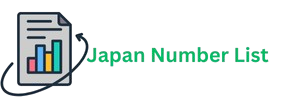Notifications back to inventory help keep potential sales alive by offering the customer the option to be notified when the product is available. This way, you will not lose sales and customers just because a product is temporarily out of stock.
In this tutorial, we will show you how to easily configure notifications back to inventory so that you do not miss your sales.
But first, let’s see if notifications back to stock are really useful.
Why should you use notifications back to stock?
A notification back to the stock is an alert that warns buyers that the product they wanted to buy is back in stock.
When your customers find out that the product they are looking for is out of stock on your site, they can start looking for other alternatives.
By using alerts back to stock, vietnam phone number data you can immediately capture the buyer with the promise to inform you as soon as the stock is replenished.
In addition, these notifications act as pre-orders. You can evaluate the demand for a product before you decide to replenish it.
In addition, these notifications are easy to set up and automate so you don’t be overwhelmed with more administrative work.
Now that you know what notifications back to inventory can do for you, we will learn how to set them up on your site.
How to Set Up Stock Back Notifications in WordPress
You can set up automatic notifications back to stock without touching any code, but you’ll need the right tool for it. We recommend the use of PushEngage.
PushEngage is the best push notification software to create alerts back to stock. It comes with an integrated price drop alert feature/Inventory to automate or schedule your notifications back to inventory.
The tool has an easy-to-use interface so you can set up custom notifications in a few minutes. In addition, you have full control over frequency, delivery time and redirect link.
The best part of PushEngage is that the buyer will be notified even if they are not actively browsing your site. And you can choose to send the notifications according to the local time zone.
This means they will receive alertness at a time when they are likely to be active online, increasing the chances of making a sale instantly.
In addition, this does not mean that PushEngage has a friendly support team that will help you get started and solve any issues that may arise.
For more details, you can read our analysis of PushEngage.
Now that you have the right tool, we’ll show you how to easily set up your notifications back to inventory using PushEngage.
Step 1: Create an account on PushEngage
First, you need to create a PushEngage account. You can start with the free plan that offers 500 subscribers and 30 notification campaigns. To have access to advanced features and a higher subscriber threshold, you must upgrade to the professional plan.
When you are logged in to your account, the first thing to do is add the site settings. In the menu on the left, navigate to the Site Settings page “Setting Settings and set the site details such as the logo, site name, image, and more.
With this, all the notifications you create will have the correct name and address of the site.
After that, open the next API Keys tab APIand click the Generate a new API Key button.
Copy the key to the clipboard, marketing list as you will need it in the next step. Now, it’s time to connect PushEngage to your WordPress site.
Step 2: Connect your WordPress site
To connect to your WordPress site, you need to download and install the PushEngage plugin on your website.
For this, go to the WordPress panel and open Plugins” Add New. Browse the PushEngage plugin and click the Install Now button.
If you need more details on this, see our guide on how to install a WordPress plugin.
After you activate the plugin, you will see the PushEngage plug-in appear in the WordPress menu. Open it, click the Setup tab and paste your API key here.
Now your WordPress site is successfully connected to your PushEngage account.
In the PushEngage dashboard in WordPress, you will see your site settings such as API key, site name, site URL, and site image URL. You can add profile settings such as name, email and time zone here.
Now, we’ll show you how to set the subscription and notification settings directly to the dashboard.
Step 3: Set up notification settings
To send push notifications and alerts back to stock, you first need to ask visitors to subscribe to your notifications. It is important to get their permission before submitting any marketing content.
To add the opt-in box to your site, go to the Subscription Dialogbox tab.
Here, you can see a preview of the optin pop-up on the right, with options to customize it to the left.
You can change the type of dialog box and add an opt-in delay time.
Then you can add a welcome notification to thank the user for signing up and welcoming your brand. In the Welcome Notification Settings tab, you can customize the title and message. You can even add a URL to redirect them to a page you want them to see.
